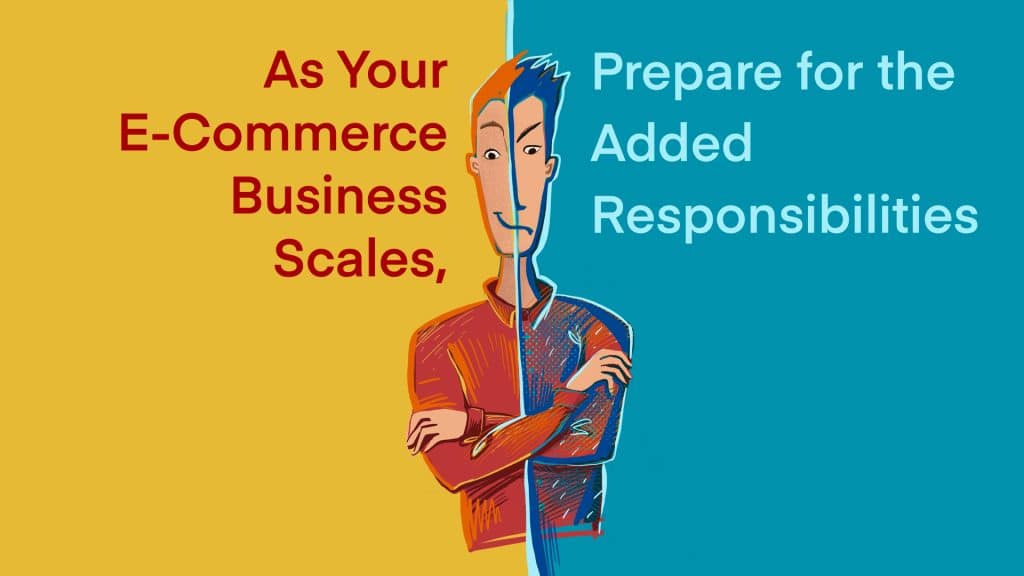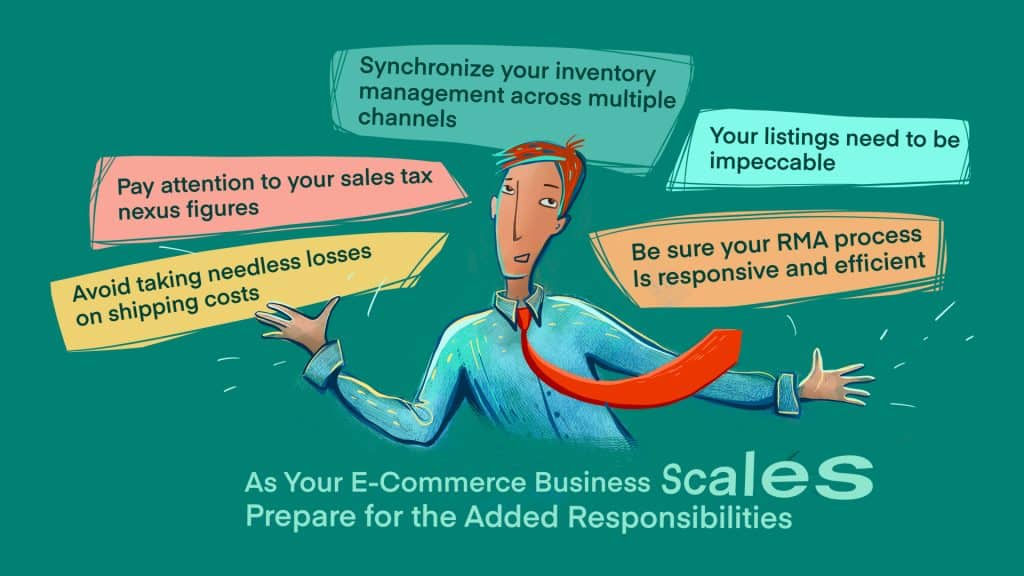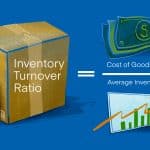
As the ecommerce industry continues to grow and thrive, many businesses are scaling faster than they would have projected at this time last year. An unprecedented increase in online shopping has generated countless new sales opportunities on popular third-party marketplaces and first-party websites.
Regardless of the cause or rate, as your online retail business grows, you must be prepared to face new issues and obligations. To perpetuate your ecommerce success, everything from logistics to marketing, accounting to customer service must be prepared to scale alongside your bottom line. Ultimately, your business will only grow as quickly as the weakest link in your workflow.
Synchronize Your Inventory Management Across Multiple Channels
A critical component of capitalizing on an ecommerce boom is diversifying your sales presence. As you expand into new marketplaces, explore fresh marketing opportunities, and transition into first-party sales, it becomes all the more important to keep your inventory accounting accurate.
One of the cardinal sins of ecommerce is overselling. Without a proper multi-channel inventory management solution, there is a real risk of going out of stock or, worse, accepting orders you can’t fulfill. This risk increases exponentially in times of high sales volume.
Descartes Sellercloud’s omnichannel inventory management platform is designed to scale with your sales presence. Regardless of your business’s size, you can always be sure you know how much inventory you have and where it is, both in transit and across multiple warehouse locations. Moreover, our predictive purchasing features can notify you when it’s time to reorder so you never miss an opportunity to convert a sale.
Pay Attention to Your Sales Tax Nexus Figures
Since 2017, ecommerce businesses have been responsible for collecting sales tax on their online sales. Given that every state that collects sales tax does so according to its regulations, this can be a monumental accounting task. Descartes Sellercloud’s TaxJar integration simplifies things by automating sales tax collection and reporting based on customers’ shipping addresses.
However, as your sales volume increases, so does your likelihood of crossing into additional sales tax nexuses. Once your sales to a particular state surpass these transactional and/or dollar value thresholds, you are responsible for turning over sales tax for your sales to the state.
As your ecommerce business scales, be prepared to collect, report, and disburse sales tax to every state where you ship products. The more business you do, the more states you will likely send sales tax payments to. This is not an area where you can afford to be caught unprepared.
With so many states still feeling the economic impacts of COVID-19, sales tax collection and enforcement will likely receive extra government attention in the near term. Moreover, some states (like Tennessee) are lowering their nexus thresholds to boost revenue. Luckily, Descartes Sellercloud’s TaxJar integration can help you remain compliant with this and any future changes to sales tax law.
Avoid Taking Needless Losses on Shipping Costs
As ecommerce businesses grow, they often miss a prime savings opportunity—shipping costs. If you stick with the same shipping arrangements you set up as a startup, you could lose money on each shipping label you print. Increased shipping volume can lead to cheaper fulfillment options.
While many shipping companies advertise scalable shipping plans, many will negotiate with you directly to develop an arrangement best suited to your needs—you just need to ask. Sometimes, you may get better rates from the same shipping partners you have always used. Conversely, you may find moving to a new shipping provider or developing a hybrid plan between several different providers is better suited to your increasing needs.
Descartes Sellercloud’s integrations with many of the most popular shipping partners make this process easy, and our data reporting features can help you easily identify the savings you generate. If you integrate a business intelligence tool, like Power BI, into your shipping workflow, you can create a web dashboard to monitor these costs in real-time.

Your Listings Need to Be Impeccable
Your fulfillment strategies don’t mean much if people aren’t purchasing your products. Whether you are listing on Walmart, Amazon, social media, or your first-party website, you must ensure your listings are alluring and accurate.
Another point to consider is that satisfied customers are more likely to reorder and/or check out what other products you offer—a likelihood that increases with scale. To maximize this potential, you should routinely audit your listing catalog.
Depending upon both the quantity and current state of your listings, this may seem like a daunting task. Knowing this, Descartes Sellercloud’s catalog features were crafted to make it easy to manage all your listings from one convenient location. Listing changes can be pushed out across all channels where you sell, as well as to your own first-party sales portal.
When revising or creating listings, remember that accuracy matters. Be sure customers know exactly what they are getting. Double-check that every element of each listing perfectly matches its respective product, including:
- Images.
- Keywords/Aspects.
- Descriptions (colors, sizing, materials, measurements, dimensions, etc.).
- Shipping and handling details.
- Return policy.
Since customers cannot see your products before ordering them, they can only rely on the information you provide. If something is amiss, you increase the likelihood that customers will let you know about it. These complaints can damage your review scores, seller reputation, and marketplace standing.
Also, keep in mind that growing numbers of dissatisfied customers also lead to growing numbers of returns. Speaking of which…
Be sure your RMA process is responsive and efficient
Returns are not great for business. With each RMA you handle, you lose some combination of the purchase, shipping costs, and product, with little to show for your efforts. Even worse, the time and effort processing the return cuts into energy that could be spent elsewhere.
That said, RMAs are part of any retail business, especially online retail. As your sales increase, your customer returns will, as well. Therefore, you must streamline your RMA management to be as flexible and responsive as possible. Paying purposeful attention to this element of your customer service protocols will prevent waste and protect your brand and third-party marketplace reputations.
Periods of growth in a business’s lifespan are always exciting times. Yet, many business owners find themselves unprepared for the added responsibilities and considerations of that growth. Thankfully, the Descartes Sellercloud omnichannel ecommerce platform was designed with all these needs.
Our tools allow you to propel your business forward as it scales with the confidence that you are doing so in ways that are compliant, efficient, and intuitive.
For more on how Descartes Sellercloud can help you take your ecommerce business to the next level, contact us directly for a free demo and consultation.




